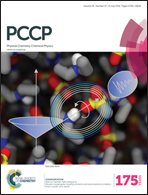Isoindigo-based polymer photovoltaics: modifying polymer molecular structures to control the nanostructural packing motif
Abstract
Donor molecular structures, and their packing aspects in donor:acceptor active blends, play a crucial role in the photovoltaic performance of polymer solar cells. We systematically investigated a series of isoindigo-based donor polymers within the framework of a three-dimensional (3D) crystalline motif by modifying their chemical structures, thereby affecting device performances. Although our isoindigo-based polymer series contained polymers that differed only by their alkyl side chains and/or donating units, they showed quite different nanoscale morphological properties, which resulted in significantly different device efficiencies. Notably, blends of our isoindigo-based donor polymer systems with an acceptor compound, whereby the blends had more intermixed network morphologies and stronger face-on orientations of the polymer crystallites, provided better-performing photovoltaic devices. This behavior was analyzed using atomic force microscopy (AFM) and two-dimensional grazing incidence wide angle X-ray diffraction (2D-GIWAXD). To the best of our knowledge, no correlation has been reported previously between 3D nano-structural donor crystallites and device performances, particularly for isoindigo-based polymer systems.


 Please wait while we load your content...
Please wait while we load your content...